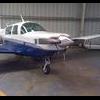This is why I upgraded from a "J' to a "K"
-
Members Online
- Deb
- CaptainBen
- affricate
- N201MKTurbo
- Scottknoll
- 0TreeLemur
- hammdo
- spistora
- 1967 427
- PT20J
- sc9roy
- alextstone
- TCC
- ttflyer
- PeytonM
- varlajo
- haymak3r
- mluvara
- GeeBee
- Reddaero
- jammerjamming
- OSUAV8TER
- tim417
- hubcap
- KSMooniac
- Paul Thomas
- Ragsf15e
- Flyler
- philiplane
- 4cornerflyer
- IvanP
- toto
- 201Steve
- RangerM20
- Rick Junkin


Recommended Posts
Join the conversation
You can post now and register later. If you have an account, sign in now to post with your account.